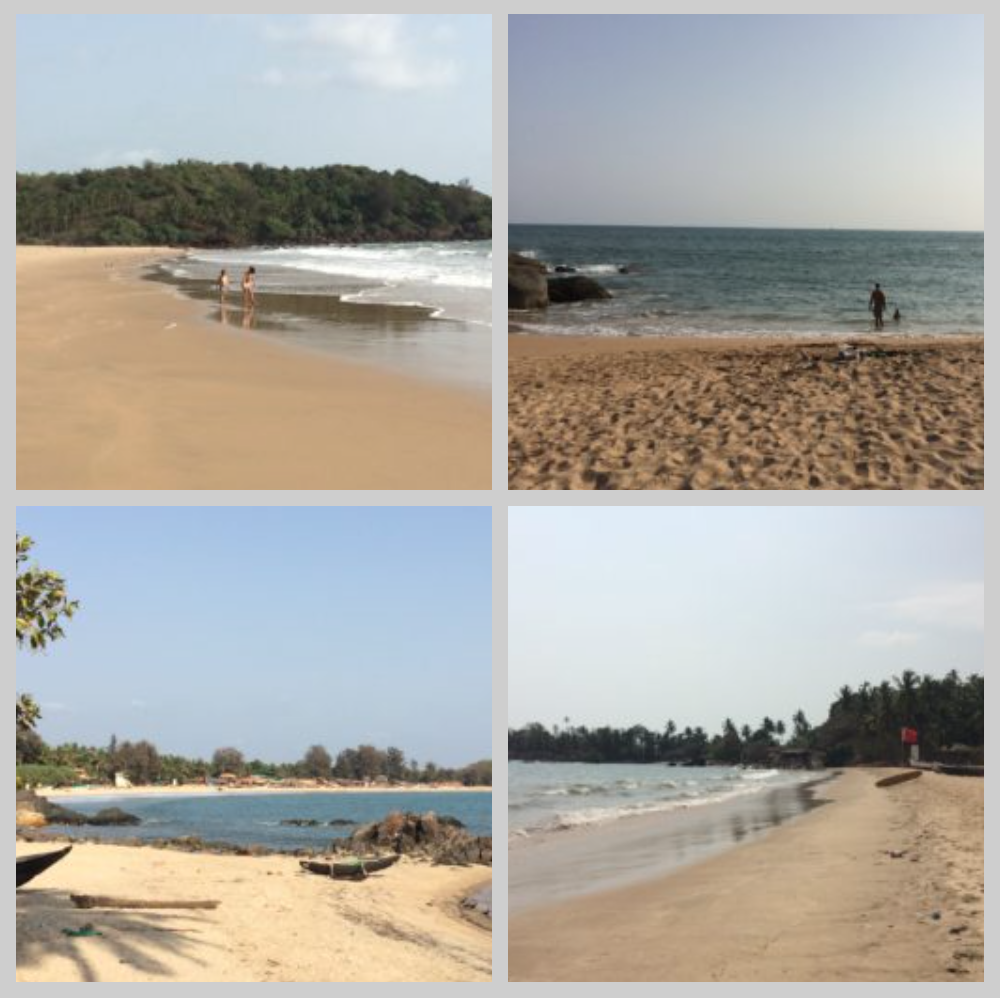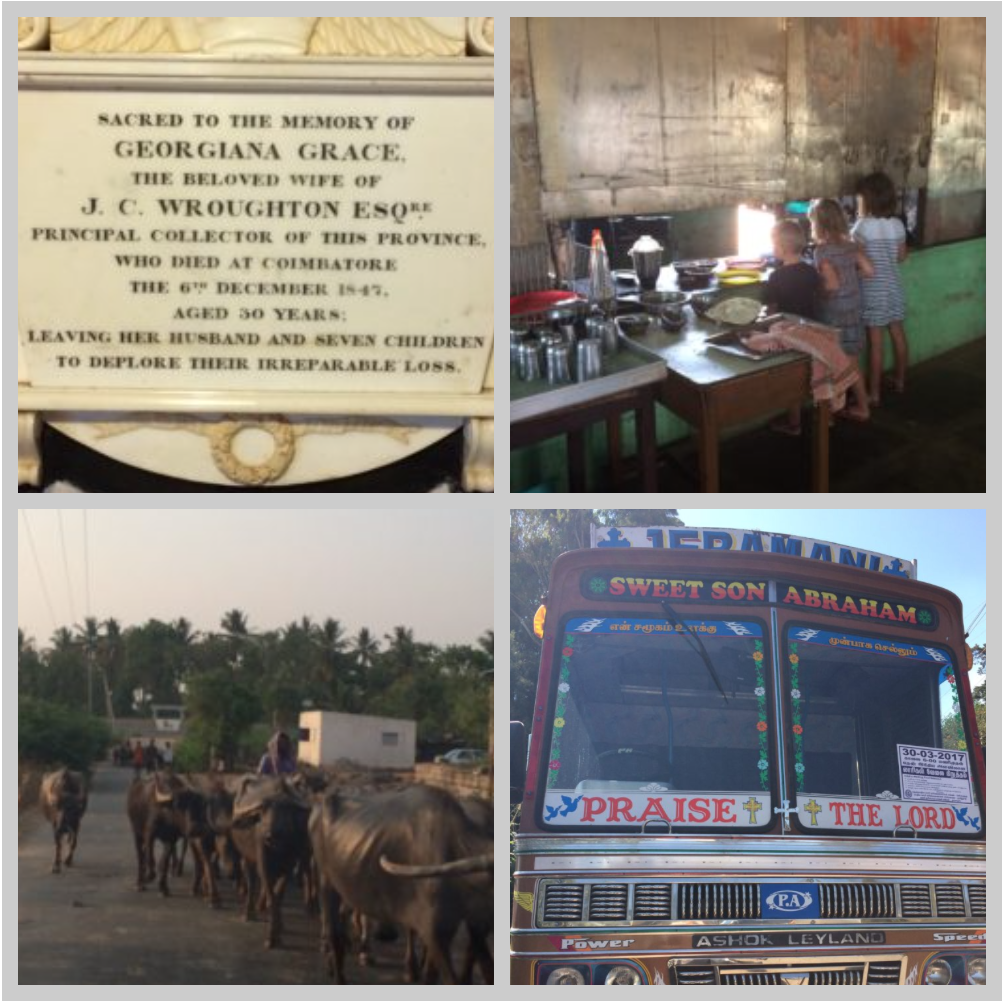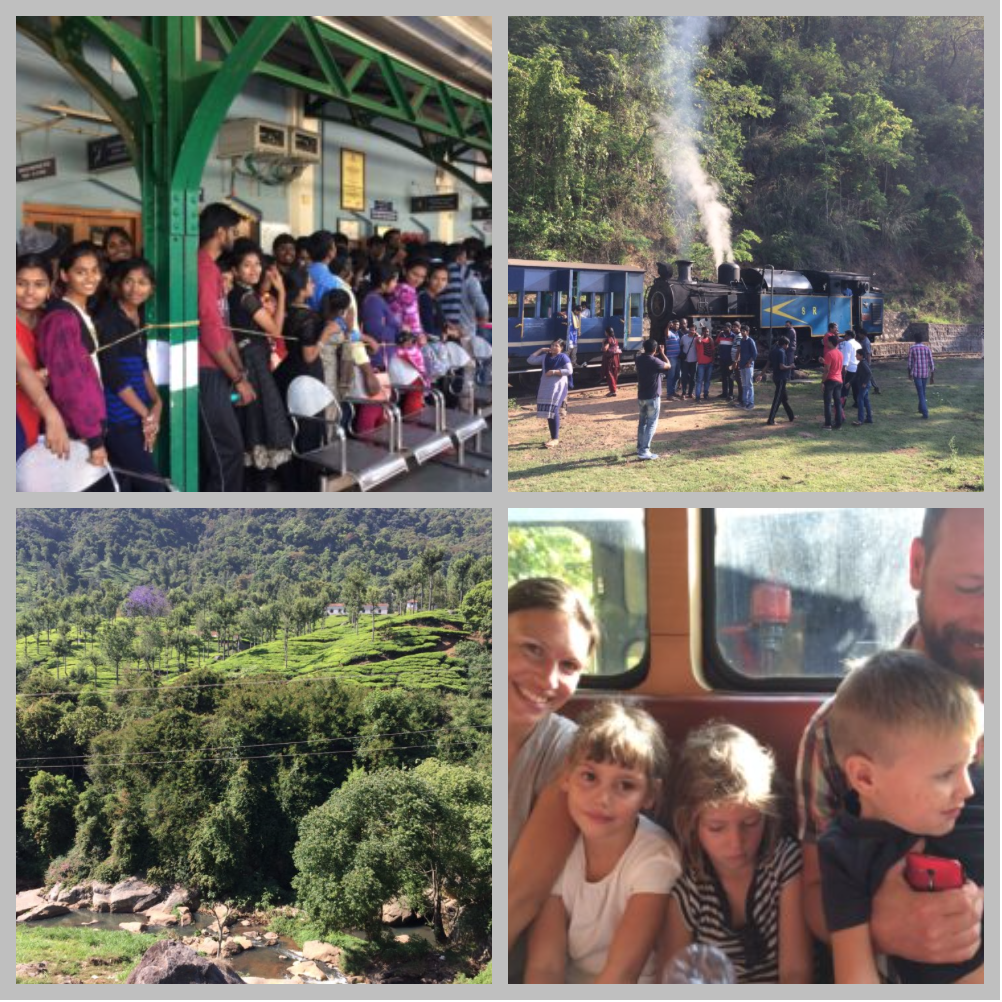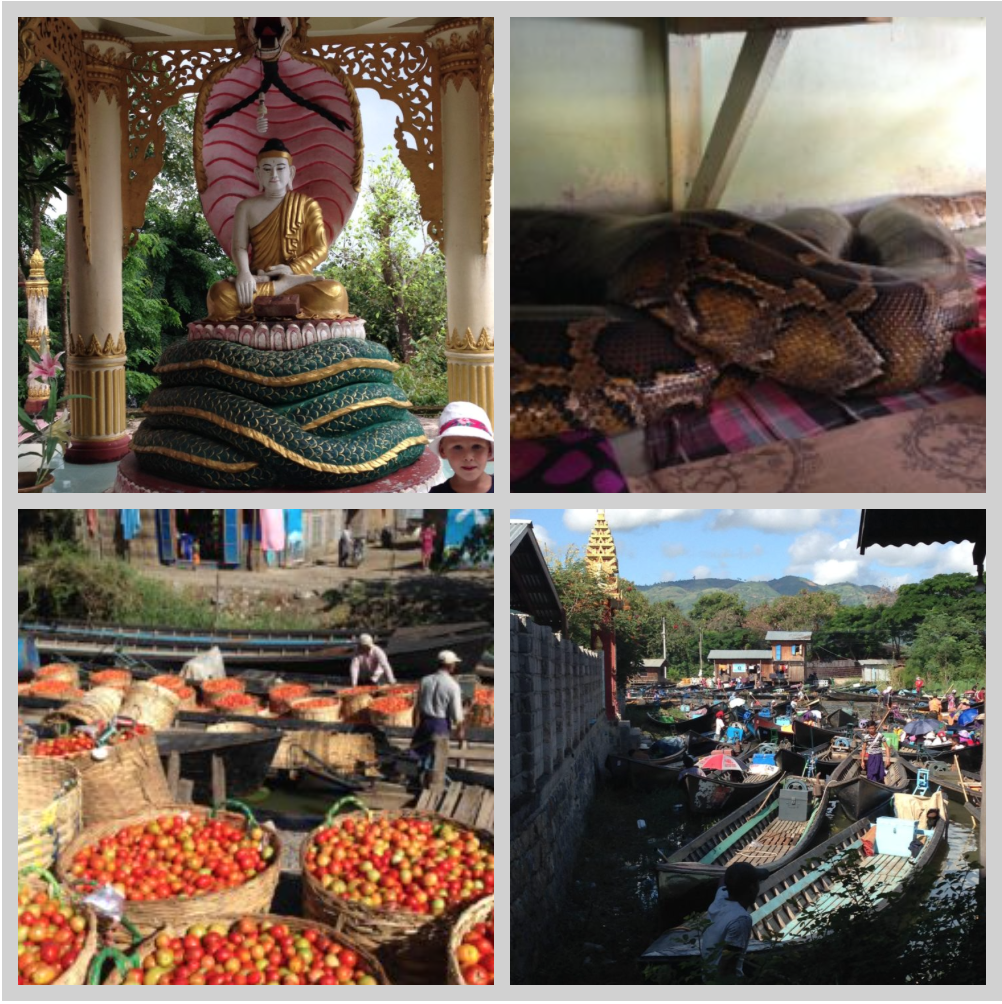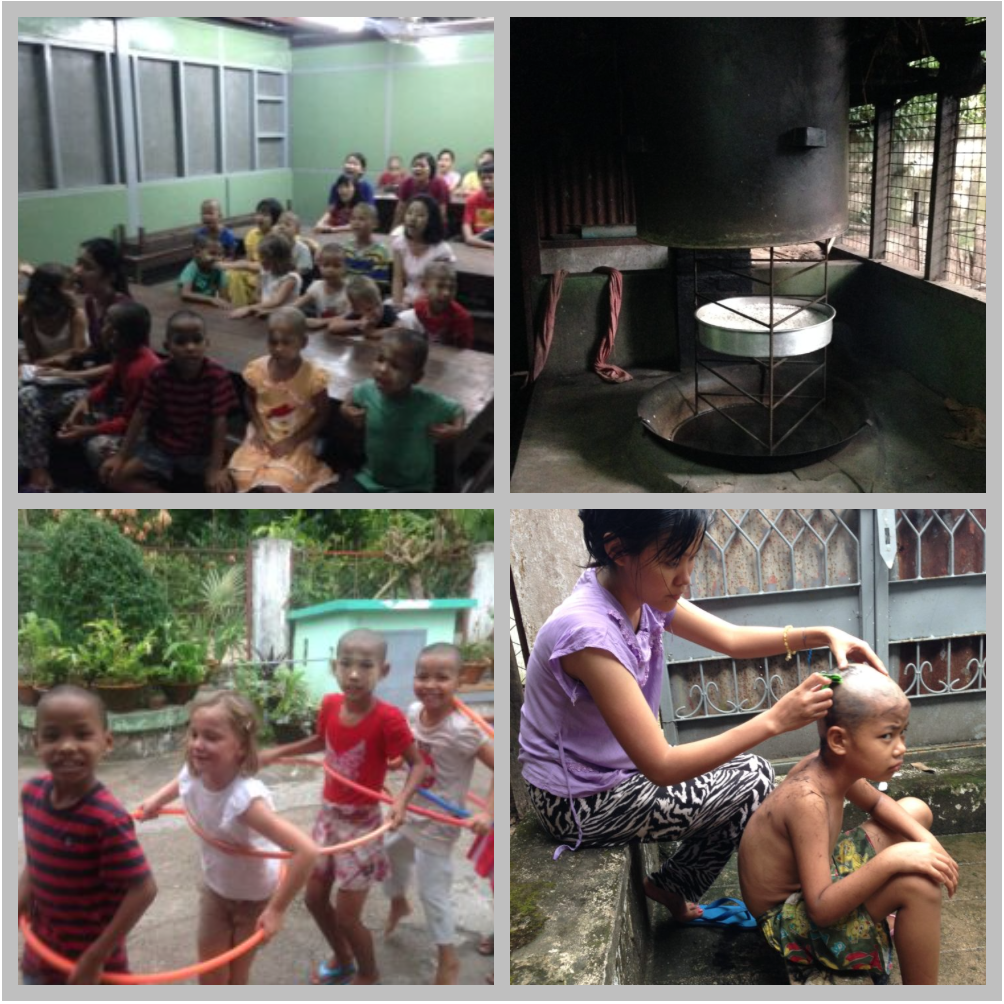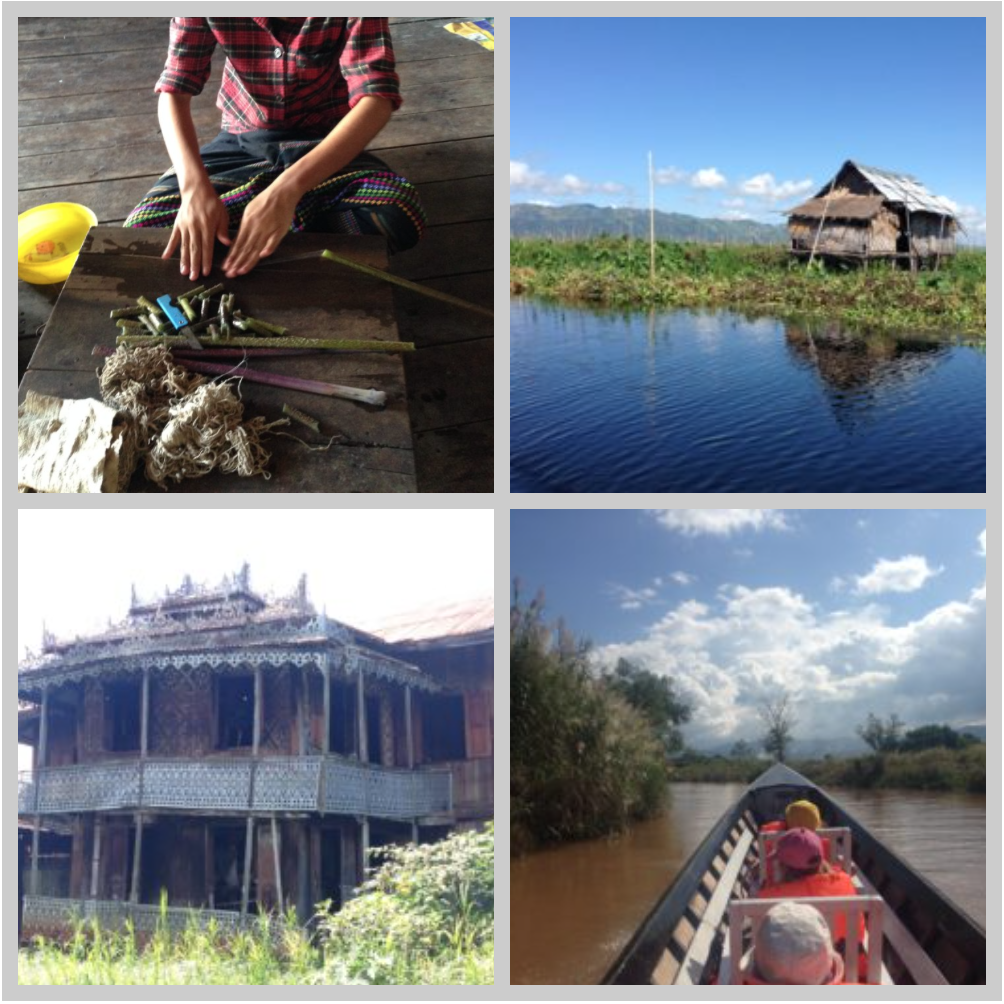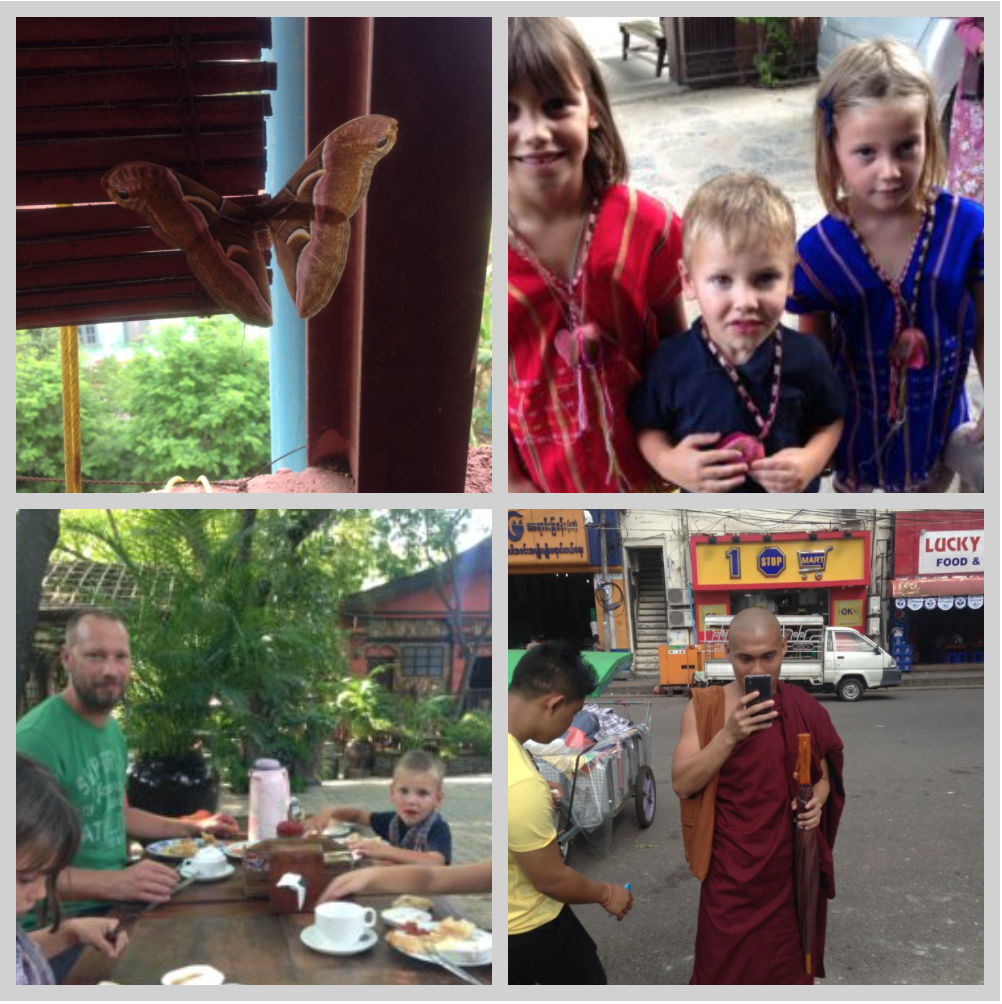Best thing about India: prescription medicines (without a prescription) for just a couple of pence! Best thing about Goa: endless beaches and warm sea New favourite treat: chick-pea flour, honey & cardamon balls What I am loving: open-air yoga surrounded by nature What I am over: power cuts and any form of dal What I am missing: friendship
3 SMALL KIDS, 2 CRAZY ADULTS, 1 YEAR TO TRAVEL THE WORLD
POST 15: 7th May 2017, Goa, India.
In my 20s, just before I went to India for the first time, I was told by an old-hand that it was impossible to visit without being changed in some way. (Or kissed by a prince). They were right on both accounts. India - the chaos, the colour, the noise and its people - activated what was lying dormant inside. (The kiss was a bonus). A friend posited more recently that India works you. It massages and manipulates your soul so that you emerge the other end a more spiritually-condensed version of yourself. I think this is also true. Indeed, it's probably why I feel uncomfortable.
Our first three weeks in southern India were jam-packed with incredible sights, novel experiences, exotic tastes and warm people. And despite being tourists, we felt very much at home. But oddly, the opposite now seems to be the case: we are no longer tourists but don't feel any more settled. In fact, I feel quite isolated. Firstly, because Goans seem a lot more guarded than other southern Indians - no spontaneous smiles here - and secondly, because despite living amongst a welcoming but close-knit group of expats - they refer to South Goa as a village - we are naturally (as six-week drop-ins), viewed as being on the outside. And I am jealous. I want to be on the inside! After 8 months on the road with no social network apart from my own family, I am starting to crave the nurturing that friendships provide.
Photo caption: just a few of our local beaches
Feeling ill at ease is also a result of the draining emotional transition I am forced to make every time we settle in one place. Because 'exploring' and 'living' require two very different kinds of psyche: during the former, I inevitably put up an invisible barrier between my little inner circle and the rest of the world. As the responsible adult, I create a sort of a safety bubble which allows us to be open but not too open, to relax but not to let go completely. We become totally self-sufficient emotionally: we must be our own entertainment and support system. Which isn't easy. So I am proud of how, when travelling, I seem to take hardships in my stride. In fact, I even try my best to make every new place we stay in feel cosy, neat, familiar and safe, even if it's for just one night. Low points endured heroically include cracked sinks held together (badly) with masking tape; holes in walls; cockroaches, ants and scorpions in our rooms; monkeys and snakes outside them; nowhere to unpack or put any of our stuff; interrupted sleep (howling dogs, trains, power cuts and parties); 41 degree heat with no air-con, as well as dirt and dust just about everywhere.
Photo caption: cows are absolutely everywhere (top left); my open-air yoga shala (top right); the kids in front of their new school (bottom left); boho-chic retail (bottom right)
In a way, travelling is easy - you are free to do whatever you want to do, whenever you want to do it. Chores are outsourced (laundry, cooking, cleaning) and there is the constant thrill of being 'entertained'. But the flip side is that this also demands a continually high input of adrenaline, and requires endless planning ahead and sorting out of logistics. This is even more the case if you have three small children under 7 that still need chaperoning in every physical, emotional and mental way possible. So forget any head space of your own: your thoughts, feelings and needs get pushed to the bottom of the pile. They are repressed until further notice. There is no time or room to give them the attention they deserve. And this has repercussions.
Photo caption: Goa is actually much greener than I had imagined. And it's not even rainy season yet!
'Living' somewhere on the other hand, demands a different approach. It may seem like the easier option, when you're jaded and exhausted by being on the road, but it can actually be even more stressful. There are just as many logistics to sort out – where to live? how to school the kids? how to get about? where to find provisions? And the responsibility that comes with each decision is even greater, because the consequences are long-term rather than temporary. When we decide to settle in one place, my tough exterior slowly melts and I suddenly remember that I am actually a princess! I realise that I was only able to put up with the hardships because there was the prospect of comfort in sight and now I absolutely must be surrounded by a degree of beauty in order to feel calm, happy and secure. Plus those emotional needs I shelved earlier finally come up to the surface for air. It can feel like a lot to deal with all at once.
This trip, we have explored three countries (Myanmar, Laos and India) and lived in four (Greece, Thailand, Bali and India) and each time, the transition from one to the other has left me feeling frustrated, anxious and confused. Frustrated because I naively expect some kind of respite as soon as we stop moving (which always takes longer than I would like), anxiety over whether we chose the right place to stay (what if we got it wrong? should we find elsewhere? how long do we give this place before deciding?) and then confusion because I am forced to sit - powerless - in the unknown. (Which, as an organising, controlling, perfectionist Virgo, is tough).
Photo caption: Goan architecture (top and bottom left); our temple house (bottom right)
Being abroad is a bit like being inside a snow globe: when you are on the road, the snow gets all stirred up and when you stop in one place, it takes time for it to settle. And the most important thing I need to remember, is that until it does, it is as though I am wearing blinkers. It is impossible to see properly nor appreciate what is unique and special in the new.
The problem is, I did forget this fourth time round and was temporarily blinded when we arrived by what Goa was not: unlike Thailand and Bali's relatively good-value luxury villas, rental stock here is limited and basic; private transport for hire is non-existent, shabby or unreliable (cars are decrepid and the tyre on our first scooter burst whilst driving to the garage to fix a puncture on our second) and supermarkets are grotty and basic. It has taken a while to get used to this.
Photo caption: Saturday is market day when the streets are flooded with lots of fresh fish and fruit and veg (top); the school-run doesn't get much better than this (bottom)
But now that we have been here for 3 weeks, I am finally beginning to see the beauty inherent in this particular corner of the world: the school the children are in is small, friendly and welcoming; the beaches nearby are deserted, clean and the water is warm; I have re-instated my regular yoga practise and once again, I have time to myself to meditate and process things. Hurrah!
Unfortunately however, there is one thing that the adjustment period won't change. We arrived in off-season. Which is something I was aware of but seriously underestimated. I thought it meant low season - less tourists, a bit of daily rain and cheaper prices. I was wrong. Actually, it means that everyone leaves (locals and expats) and that everything closes. The school is dwindling in size by the day; most of the beach restaurants and cafes have already shut; yoga classes are winding up and local stores are disappearing alongside the diminishing tourist dollar. Then there is the weather: May is the hottest and most humid month of the year (oops) and June brings monsoon. Not just a daily rainstorm that clears the air but a torrential onslaught that tears down all impermanent structures and makes your clothes to go mouldy. Because this is India after all. And everything is extreme here.
Photo caption: drying chillies (top left); our local beach shack restaurant (top right): turtle hatchery (bottom left); colourful Goan houses (bottom right)
So, whilst we originally thought we would stay until the first week of July, we have decided to move on earlier. Which is fine. Because even though I can now see the attractions of Goa and I appreciate its own, special charm, I don't think it truly resonates with me. Probably because it is too much like me.
Whereas Ubud is supposed to be governed by feminine shakti energy, which felt nurturing, supportive and loving, Goa is supposed to be ruled by masculine shiva consciousness which is about activating the feminine energy - giving it direction, form and content - and about getting things done. And I don't need any more pushing. I am just learning to allow. My still dominant masculine energy wants to receive and surrender, to be softened and not tamed. So my friend was right: India does work you, just not in the way I need right now...
To see where we are on a map, click here!
Did you enjoy this post? Let me know in the comments or by sharing it with other social media! Don’t forget to use the sign up form to receive my latest posts via e-mail. You can also follow me on facebook, youtube, twitter, instagram & pinterest!


